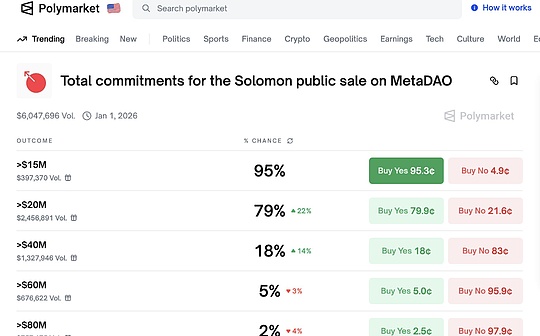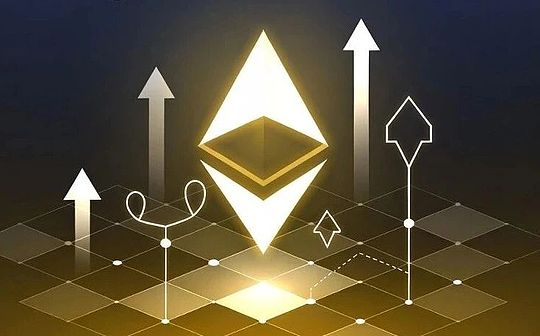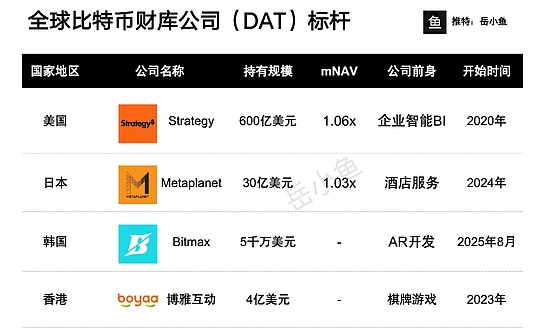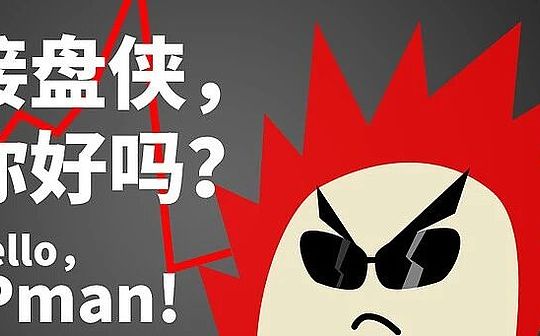
Author: Delphi Digital, Translation: Bit Chain Vision Xiaozou
“Unlike today’s tokens associated with specific applications, in the future, tokens may be more and more used to support the benefits of specific solver (solving/device) that may participate in one or more independent applications. Because it is basedThe cross -chain value transfer application (such as Across, Debridge’s DLN,@Hashflow, Connext, CHAINFLIP LABS, Uniswap Labs, etc.) require Solver to participate in multiple applications to participate in multiple applications.Reasonable.
Our “Infrastructure Outlook of 2024” has comprehensively and in -depth discussions on the following 6 topics:
theme1: L2 Battle
-
Study and analyze the biggest catalyst that may cause the next round of market crash, and the increasingly fierce competitive pattern between Rollup.
-
The L2 ecosystem is getting more and more isolated -analyzes Arbitrum, Optimism, Base, ZKSYNC, Mantle, Starknet, Polygon, etc.
-
Ethereum alignment: DA (data availability) that can be replaced to achieve scalability and top protocols with competitive products.
-
In -depth research on value accumulation: from ETH, L2 tos to replacement of DA -reflecting different cost generation design and future Rollup structures.
-
Entering the L1 competition pattern, the main competitors are Monad, SEI, BERACHAIN, SUI and Aptos.
theme2: Solana
-
A comprehensive overview of Solana state -assessing the advantages and disadvantages of Solana architecture, changing charges, and the relationship between NFT and SOL prices.
-
Firedancer & amp; Franches: Simplified abstracts, the latest optimization and performance update, and Franchescer architecture.
-
Payment: Sorana’s good field -evaluation of payment activities and infrastructure, payment applications, and integrated analysis of integrated with SPHERE, CODE, Sling, Shopify and other integration, and so on.
-
OPOS: It may only appear on Solana -unique application overview of Solana. It mainly includes Crankless Limit OrderBook DEX “PHOENIX”, APP for consumers and CNFT platform for creators.wait.
theme3: Cross -chain future based on intentions, value will flowsolvers
-
The profitable token bridge will decline, and the thorough review of the USDC full -chain standard CCTP will change the bridge’s pattern.
-
The main players based on the intention of the intention are Across, which is the most mature bridge.
-
Where does value come from?
-
Future Outlook: How to become more and more blurred in the world of intent and the boundaries between applications in the world.
theme4TheSolverCentralization
-
The evolution of DEX (decentralized exchanges) focuses on the evolution of intention -based architecture, focusing on in -depth research of Uniswapx.
-
Solver’s decentralized fifty degree gray: Solver’s competition, decentralization and requirements.
-
Solver will dominate the dex transaction volume based on intent.
theme5TheThorchain & amp; ChainFlip –Extension is the decentralized highway of Bitcoin
-
A comprehensive overview of Thorchain and its development, SYNTHS and protocol own liquidity.
-
What are the benefits of synths?
-
Future Outlook: What is the next step of ThorChain in 2024?
-
In -depth study ChainFlip: The differentiated factors used to evaluate Thorchain such as MEV in JIT AMM and ChainFlip.
theme6: Ethereum route map
-
Future hard fork-Study the upcoming two main hard forks: DeneB-Cancun hard fork and Prage-Electra hard fork.
-
The impact of EIP-4844 and its impact on data release-one of the most anticipated cases of Ethereum upgrades since the merger of EIP-1559 and Ethereum.
One key point:“The future of cross -chain is based on intentions, and value will flowsolversEssence“
CCTP and standard bridges have obvious advantages and disadvantages.First of all, they solve most of the liquidity/user experience fragmentation problems by increasing the share of the standard for standardized assets.On the other hand, because of their conservativeness, their speed is very slow.The verification of the Rollup Bridge may take a few hours or weeks, and CCTP may take tens of minutes to several hours.

However, users want faster speeds.Therefore, back -end services that may come from users who may come from users, these applications compete with each other in terms of speed, capital efficiency and GAS costs.Therefore, we believe that design -based design will have a competitive advantage.
Across stands out as the most mature bridge.The field of Unicom between Ethereum and Ethereum Rollup is particularly active. In addition, more and more Rollup adopts, Across has obtained a considerable market share.
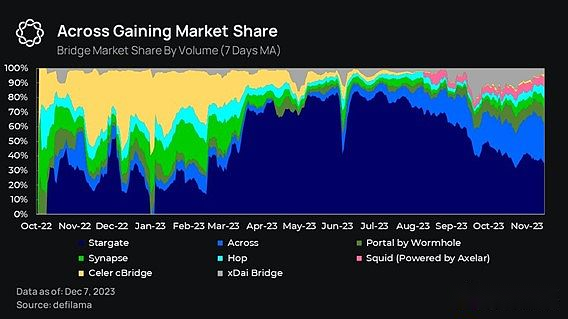
Our main point is that the future of cross -chain will be based on intent and can be explained as an example.
The uniqueness of the liquidity network based on intention is that it can use the liquidity under the chain through an open, no license Solver chain main market.
The concept is: the user packed the bridge risk to Solvers.Solvers competes for cross -chain accounting intention and obtains value through charges.
The cross -chain transfer process performed through ACROSS can be simplified into the following three steps:
step1Generate intent: users deposit the assets into the custody account to express their cross -chain accounting intention. After the intention is completed, the Relayer (relay/device) will get the fee.
step2Intent: Relayers compete for the target chain recognition and complete the user’s intention to obtain the fee, and use the liquidity of the liquidity to pay from its own pocket.
step3, Settlement: The complete transaction on the target chain was sent back to the source chain for verification.The winning Relayer will unlock the assets in the hosting and verify it through the Optimistic Oracle of Across UMA to reduce the cost of GAS on the chain.
Key aspects: The user’s cross -chain booking intention is provided by Relayers to provide instant service, and Relayers will get compensation.This ensures the fastest processing speed of users, and at the same time enables Relayers to minimize operating costs.
The transaction -based bridge transfer time is limited to the final certainty of the source chain and the target chain.The intention -based bridge overcome this problem by using Relayer.Relayer can even realize the user’s intention on the target chain before the transaction on the source chain is completed.This makes transactions faster because the competition between Relayer is getting greater.

Across’s settlement is optimized for minimizing the GAS fee, and regularly (every 2-4 hours) pays in batches to reduce the cost of amortization.Across uses UMA’s Optimistic Oracle to verify, which further reduces GAS costs.
Reliability is essential for liquidity networks like ACROSS.In order to ensure the continuous availability of the liquidity of the target chain, the agreement also helped Relayers re -balance its liquidity.This is achieved through the liquidity on the chain collected by ACross to use the passive LP (liquidity provider). It uses the Hub-And-SPOKE modelThere are some smaller radiation pools.
The protocol regularly adjusts the liquidity between the radiation pool and the central pool to actively carry out re -balance management.Such flexibility allows Relayers to receive money on their choice, which has nothing to do with the location of the user’s deposit.These pools can also be used as a backup of liquidity under the chain to prevent the service user’s intention from missing the service.
Future outlook:
ACross currently uses a normative bridge, and is planning to turn to UBA UBA to achieve a re -balance of liquidity.UBA will involve Relayers under the chain, incentive the balance pool, and impose a penalty to the Relayers exited from the arrears of the balanced radiation pool.
After UBS, Across will not bind a certain bridge method, which will allow Relayers to choose any bridge and compatible chain without using a normative bridge.

